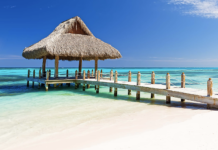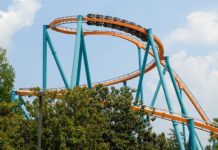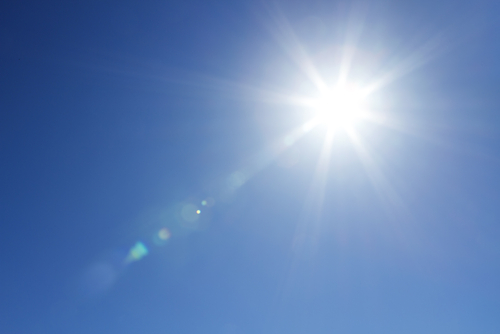Bioparc Fuengirola in Malaga, Spain champions a new model of zoo based on respect for nature and the preservation of natural species, a model, which has already established itself as a flagship for Europe.
What Bioparc Fuengirola represents is a different concept of zoo. A zoological park where animals live side-by-side, recreating their natural habitat and so fostering their development at all levels. Visitors are stepping inside a true documentary of the deepest tropical woodlands.
There is today no ethical sense in keeping wild animals in captivity unless this helps to preserve their species in the natural world.
Bioparc Fuengirola stands out, among other aspects, for its architectural design as an “immersion zoo”, plunging visitors into the animals’ native environment. The whole centre is intended as a stroll through an all-surrounding recreation of the creatures’ original habitat, providing a solution of continuity between the physical space occupied by the public and by the animals, with the aim of expressing some of the magic involved in walking through the woodlands and discovering their inhabitants.
A faithful representation of a tropical woodland
The habitats of Africa, Asia and Madagascar are recreated by the themed design of embankments, waterfalls, rocks, trunks and even realistic trees. The creation of the baobab tree, one of the largest artificial trees in the world, standing 25 metres high, set the park’s designers a real challenge. It has now become a landmark of the centre and of the town of Fuengirola itself.
This comprehensive recreation of habitats goes hand-in-hand with messages about the need to preserve them.
Emblematic species
Since it was first planned, the Bioparc was intended to house species whose reproduction was of the utmost importance. To this end a selective collection plan was implemented, with the construction of areas specially designed for this purpose. A total of 130 different species and over 1400 individual animals are now in residence.
Bioparc is home to such emblematic species as the Sumatra Tiger, featured on the IUCN (International Union for Conservation of Nature) Red List of Threatened Species, in the highest category of “Critically Endangered”. Only 250 specimens remain in the wild in their natural habitat, and the Bioparc has succeeded in breeding the species.
The centre also has exclusive species of such great biological importance as the Malayan False Gavial, bred here successfully for the first time in captivity, and the Blue Duiker, to be found nowhere else in Spain, along with the only group of breeding gorillas in Andalusia.
International recognition
The centre has in a very short period established itself at the forefront of European zoos, and has as such won widespread recognition both in Spain and beyond.
It recently received an award acknowledging the marvellous reproduction of the enclosure known as “The Mangrove”, which includes a remarkable underwater view of this peculiar ecosystem, home to fish, birds and turtles in grave peril of extinction.
This award was bestowed by the EAZA (European Association of Zoos and Aquaria), of which the Bioparc is a member and with which it cooperates on more than 35 European Endangered Species Breeding Programmes, known as EEPs, which have given it the exceptional collection it now enjoys, with great breeding potential.
Since it opened in 2001, the park has been a byword for quality in every aspect. This species conservation centre currently receives more visitors than any other animal park in Andalusia, establishing its position as a one of the landmarks and unmissable attractions of the Costa del Sol.
Jungle Clearing, a living documentary
The “Jungle Clearing” exhibition of birds and mammals aims to bring visitors a little closer to certain animals of the tropical forests. This is a pioneering exhibition within Spain, being the first to bring together terrestrial mammals and birds in the same place and at the same time.
The scene which has been reproduced is a clearing in a jungle, based around two enormous trees, a waterfall, a river and tropical vegetation, taking visitors the into the very heart of the Tropical Jungle, and allowing them to enjoy the sight of these animal species without the presence of any foreign object or instrument.
A jungle to explore by moonlight
The warm summer nights on the Costa del Sol offer visitors an opportunity unique anywhere in Spain or in Europe, as Bioparc Fuengirola is the only such establishment on the continent to open its entire premises until midnight in July and August, the only other zoo in the world to do this being in Singapore.
Every summer it recreates the effect of moonlight using a complicated system of special illumination. This allows visitors, as they stroll through the zoo, to discover the secrets of the mysterious nighttime world of the tropical woodlands.
To check the weather forecast in Malaga, click here.
© Bioparc Fuengirola







